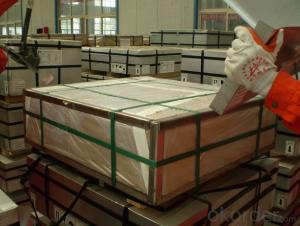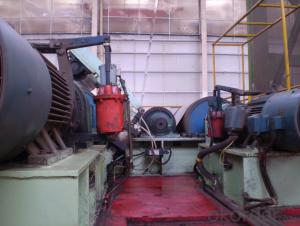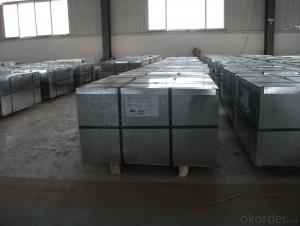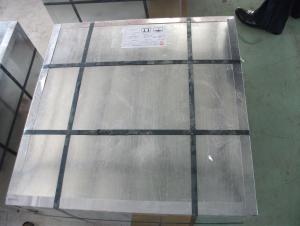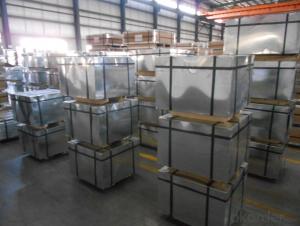TINPLATE OF Prime Good or Secondary Quality
- Loading Port:
- China Main Port
- Payment Terms:
- TT OR LC
- Min Order Qty:
- -
- Supply Capability:
- -
OKorder Service Pledge
OKorder Financial Service
You Might Also Like
Our Tinplates Specification:
Standard: ISO 11949 -1995, GB/T2520-2000,JIS G3303,ASTM A623, BS EN 10202
Material: MR,SPCC
Thickness:0.15mm - 0.50mm
Width: 600mm -1150mm
Temper: T1-T5; DR8 - DR10;
Annealing: BA & CA
Passivation:311
Oil: DOS
Surface: Finish,bright,stone,matte,silver
Packing:
1、For sheets: plastic or waterproof paper, metallic cover and angles, steel strips,wooden pallet.
2、For Coils: plastic or waterproof paper,plastic protect plate,steel strips.
Coil Inner Diameter: 508mm
Weight: 6-10 tons/coil
Application: widely used in every kinds of packing cans,such as tea packaging cans, painting packaging cans, chemical packaging cans and dry food packaging cans; and also mechanical parts
Both Prime and Second Quality Are Available!!!
- Q: What are the main applications of tinplate?
- Tinplate is mainly used in the packaging industry for making cans, containers, and other metal packaging products. It provides excellent protection against corrosion, making it suitable for storing and preserving food, beverages, chemicals, and other perishable goods. Additionally, tinplate is also used in the manufacturing of aerosol cans, decorative items, and various other household products.
- Q: What are the applications of tinplate?
- Tinplate is commonly used in various applications due to its unique properties. It is primarily used in the packaging industry for food and beverage containers, as tin coating provides excellent protection against corrosion and ensures product safety. Tinplate is also utilized in the manufacturing of aerosol cans, paint containers, and metal closures. Its versatility extends to the automotive industry, where it is employed for making fuel tanks, oil filters, and various automotive components. Additionally, tinplate finds applications in the construction sector for roofing, ductwork, and HVAC systems.
- Q: Can tinplate be used for packaging of hazardous materials?
- Yes, tinplate can be used for packaging of hazardous materials. Tinplate is a durable and corrosion-resistant material that provides an effective barrier against external factors. It is commonly used for packaging hazardous substances such as chemicals, paints, and aerosols, as it ensures the safety and containment of these materials while preventing any leakage or contamination.
- Q: What are the properties of tinplate?
- Tinplate is a type of steel that is coated with a thin layer of tin, which imparts several key properties. It is highly corrosion-resistant, making it suitable for packaging food and beverages. Tinplate also has excellent heat resistance, making it ideal for products that need to withstand high temperatures during processing or cooking. Additionally, it has good formability, allowing it to be easily shaped and molded into various sizes and designs.
- Q: What are the different grades of tinplate?
- The different grades of tinplate include Single Reduced (SR), Double Reduced (DR), and Electrolytic Chromium Coated Steel (ECCS).
- Q: Who can tell me how to adjust the roller seal defects?
- The sealing process of hxa tank by double seam operation completed. Double seam method refers to two different groove shape of seaming rolls, through two feed motion sequence, the tank body and the tank cover with lid, crochet and cans, flanging hook tightly, so as to achieve the purpose of sealing method. Simply, that is the first edge hook, two edge compression molding.
- Q: Can tinplate be used for furniture?
- Yes, tinplate can be used for certain furniture applications. It is commonly used for manufacturing metal cabinets, storage containers, and decorative accents on furniture pieces. However, it is not typically used as the primary material for furniture due to its limited strength and durability compared to other materials such as wood, plastic, or metal alloys.
- Q: How is tinplate different from other types of metal packaging?
- Tinplate is different from other types of metal packaging, such as aluminum or steel, primarily because it is made from thin sheets of steel coated with a layer of tin. This tin coating provides several advantages, including corrosion resistance, enhanced shelf life, and a glossy appearance. Additionally, tinplate is lightweight, malleable, and easy to shape, making it suitable for various packaging applications.
- Q: How is tinplate used in the pet food industry?
- Tinplate is commonly used in the pet food industry for packaging cans or containers that store and preserve pet food products. Tinplate is a durable and corrosion-resistant material that helps maintain the quality and freshness of pet food. It also provides a barrier against external elements such as light, moisture, and air, thereby extending the shelf life of the product. Additionally, tinplate cans are easy to open and reseal, making them convenient for pet owners.
- Q: Can tinplate be used for consumer electronics packaging?
- Yes, tinplate can be used for consumer electronics packaging. Tinplate is a durable material that provides excellent protection against moisture, corrosion, and physical damage. It is commonly used for packaging various consumer electronics such as mobile phones, tablets, and small appliances. Additionally, tinplate can also be easily printed on, allowing for attractive and customizable packaging designs.
Send your message to us
TINPLATE OF Prime Good or Secondary Quality
- Loading Port:
- China Main Port
- Payment Terms:
- TT OR LC
- Min Order Qty:
- -
- Supply Capability:
- -
OKorder Service Pledge
OKorder Financial Service
Similar products
Hot products
Hot Searches
Related keywords
